Renewable energy is a growing and increasingly important topic in today’s world. As the demand for sustainable and environmentally friendly energy sources continues to rise, the need for education and knowledge on the subject becomes more crucial. For those looking to expand their understanding of renewable energy, there are countless books available on the topic. To help navigate through the vast selection, we have compiled a list of the top 10 most popular renewable energy books. From solar power to wind energy and everything in between, these books offer valuable insights and information for anyone interested in the future of sustainable energy.
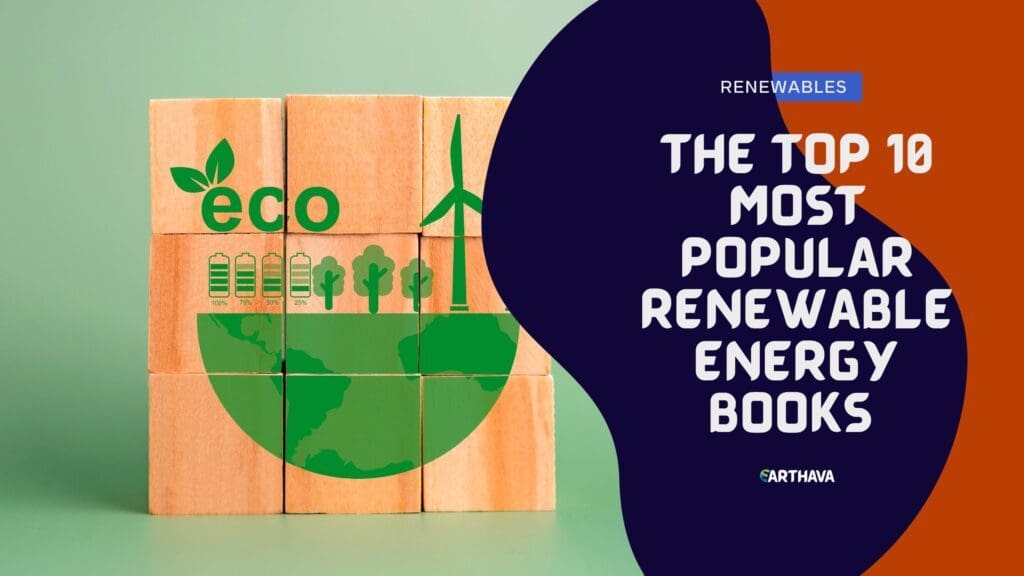
Top 10 Books on Clean Energy and Sustainability
1. Godfrey Boyle: Renewable Energy: Power for a Sustainable Future
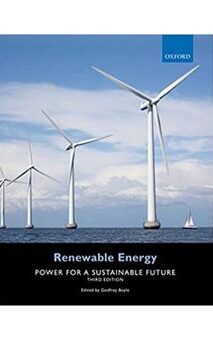
Renewable Energy: Power for a Sustainable Future, Third Edition, examines both the practical and economic potential of renewable energy sources to meet this challenge. The underlying physical and technological principles behind deriving power from direct solar (solar thermal and photovoltaics), indirect solar (biomass, hydro, wind, and wave), and non-solar (tidal and geothermal) energy sources are explained, within the context of their environmental impacts, their economics, and their prospects.
The Author:
Professor Godfrey Boyle is an expert on renewable energy and the director of the Energy and Environment Research Unit in the Open University’s Faculty of Mathematics, Computing, and Technology.
2. Professor Bruce Usher: Renewable Energy: A Primer for the Twenty-First Century
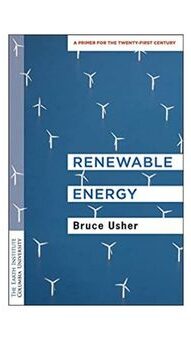
Renewable Energy: A Primer for the Twenty-First Century is a comprehensive and insightful analysis of how the current energy transition will impact our planet in the coming years. Written by Professor Bruce Usher, it provides insights and analysis into the renewable energy landscape, with a particular focus on wind and solar.
The book provides a clear explanation of why wind and solar power have been so successful over the last decade; how governments and businesses can capitalize on this trend; and what dangers lie ahead. Readers of all levels will learn how to navigate the coming energy transition while being left in no doubt as to its global environmental impact.
The Author:
Bruce Usher is a professor of professional practice at Columbia Business School who teaches the intersection of finance and social and environmental issues.
Hardcover: $45.41
Paperback: $20.00
3. Dr. Harold A. Geller: Renewable Energy: A First Course
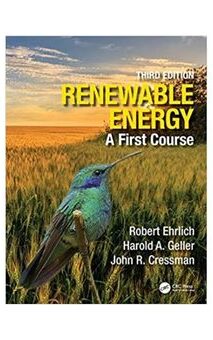
Renewable Energy: A First Course is an introductory text that focuses on the fundamentals of renewable energy and its applications. This book covers renewable and nonrenewable energy, conservation, economics, and public policy.
Analytical skills are stressed with wide application while avoiding technical jargon and advanced math. Accessible to upper-division undergraduate students and general readers with a minimum physics background, this edition features updates that bring the reader up to speed with current trends, policies, technologies, and behaviors.
The Author:
Dr. Harold A. Geller is the director of the George Mason University Observatory and an associate professor of physics and astronomy. He has also been named a Solar System Ambassador for the NASA Jet Propulsion Laboratory.
Hardcover: $258.24
Paperback: $84.73
4. Gilbert M. Masters: Renewable and Efficient Electric Power Systems
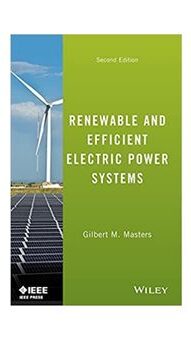
In this compelling new edition, Gilbert Masters offers a definitive guide to the technologies and economics of renewable energy systems. With their renewed relevance in today’s power market, systems such as wind turbines and solar photovoltaics are now widely used.
Renewable and Efficient Electric Power Systems provide a solid, quantitative, practical introduction to these concepts, with updated material on tidal and wave power, small-scale hydroelectric power, and biomass as well as demand-side management techniques. The book also explores emerging smart grid technologies.
The Author:
Gil Masters, a professor of Civil and Environmental Engineering at Stanford University, has a passion for solving engineering problems.
5. Mr. William H Kemp: The Renewable Energy Handbook
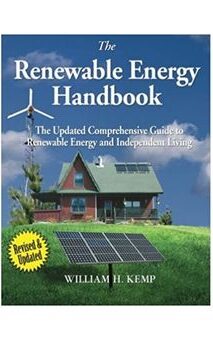
Learn how to save money and the environment at the same time by harnessing the twin technologies of energy efficiency and renewable energy. Learn about wind, solar thermal, and photovoltaic systems for your home, and hot water system designs for your home and business.
Perhaps you wish to join others who are selling clean, renewable electricity to the power company, and helping to save the environment and make money at the same time. Whether you are just curious or an industry expert, this handbook will teach you how to build systems that are cost-effective, safe, and reliable.
The Author:
Bill Kemp, V.P. Engineering for an energy sector corporation, is a leading expert in small and mid-scale renewable energy technologies. He leads the development of hydroelectric power systems.
Kindle: $14.95
Paperback: $24.95
6. Mark Z. Jacobson: 100% Clean, Renewable Energy and Storage for Everything
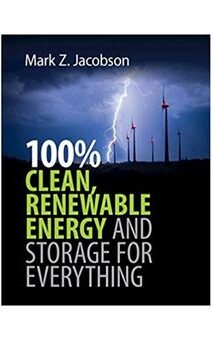
This textbook is the first comprehensive source for understanding the science, technology, and policy behind a transition to 100% clean, renewable energy. It covers all aspects of this crucial transformation – electricity, heat, cold, and hydrogen storage technologies; ways to keep the electric power grid stable; non-energy sources of emissions – as well as why it’s needed, what will happen if we don’t transition, and current progress in transitioning.
The Author:
Mark Zachary Jacobson is a professor of civil and environmental engineering at Stanford University, where he directs the Atmosphere/Energy Program.
Hardcover: $113.99
Paperback: $37.79
7. Bent Sørensen: Renewable Energy: Physics, Engineering, Environmental Impacts, Economics and Planning
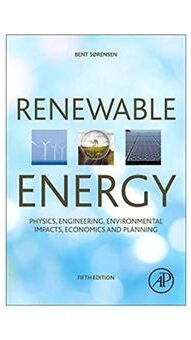
Renewable Energy: Physic, Engineering, Environmental Impacts, Economics, and Planning is the most comprehensive coverage of renewable energy available. Written in an easy-to-understand style and with a clear focus on technology, this book provides users with a detailed map of the renewables universe.
The author’s goal is to provide an introduction to the subject that goes beyond technical information, giving readers a full understanding of the advantages and limitations of renewable energy technology and its impact on the economy as well as providing an overview of the current issues associated with its development.
The Author:
Bent Erik Sørensen, a Danish physicist, is known mainly for his research into future forms of renewable energy.
Hardcover: $215.50
Paperback: $97.50
8. Vaughn C. Nelson: Introduction to Renewable Energy
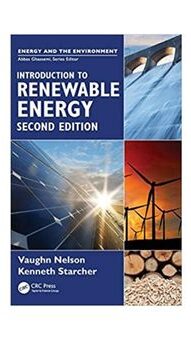
This book offers a fresh perspective on the topic of renewable energy. Recognizing that the world’s energy needs are abundant and that renewable resources offer numerous advantages, including cleanliness and accessibility, this text is dedicated to converging science and technology in a way that ensures a sustainable future.
From solar photovoltaics to wind turbines and bioenergy, Renewable Energy: A Guide for Teaching is an invaluable resource that provides today’s students with a solid foundation in renewable energy technologies.
The Author:
Dr. Vaughn C. Nelson has been researching renewable energy since the early 1970s.
9. Joshua Sneideman: Renewable Energy: Discover the Fuel of the Future With 20 Projects (For Kids)
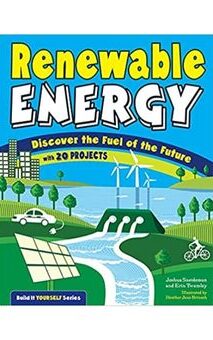
Renewable Energy: Discover the Fuel of the Future is a fun and empowering book for kids. Readers ages 9 to 12 learn about these renewable energy resources and discover how to use them in their everyday lives.
This book shows kids’ future jobs in these industries and gets them excited about contributing to a world run on clean energy. Hands-on projects, essential questions, links to online primary sources, and science-minded prompts make this book a key addition to classrooms and libraries.
Hardcover: $22.95
Paperback: $17.95
10. Baby Professor: Renewable Energy Sources – Wind, Solar, and Hydro Energy Edition (For Kids)
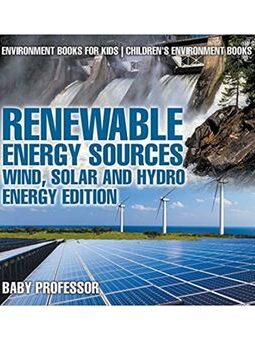
The Baby Professor books are a fun way to empower your children with all the information that they need to care for our environment, as well as offer them a glimpse into the future.
Learn about renewable energy sources such as wind, solar, and hydro energy in this specific edition of The Baby Professor series. This book will allow you and your child to understand the importance of energy conservation and sustainable energy use.
Paperback: $12.99
Common FAQ
Renewable Energy Definition
Renewable energy is energy that comes from sources that are naturally replenished. The most common sources are wind, solar, geothermal, and hydroelectric power.
Renewable energy is often defined as ‘energy that comes from resources that can be replaced by natural or human processes’. It includes solar power, wind power, hydropower, and other technologies that don’t produce greenhouse gases (GHGs) or other air pollutants.
Renewable energy is sometimes called ‘green power’ because it’s an alternative to traditional utility-supplied electric power.
The main sources of renewable energy are:
Wind power: this uses wind turbines to convert kinetic energy from the wind into mechanical or electrical energy. Wind turbines can be used on land or at sea and the electricity they generate can be used in homes, offices, and factories.
Solar power: this uses sunlight to generate heat or electricity through photovoltaics (PV) or solar thermal technologies such as concentrating solar thermal technology. PV systems use semiconductors made of silicon cells to convert sunlight directly into electricity while concentrating solar thermal systems use mirrors to concentrate direct sunlight onto a smaller area so that more heat is produced per unit area than with conventional PV systems.
How does Renewable Energy Help Climate Change?
The idea that renewable energy will help reduce climate change is intuitive. After all, the sun and wind don’t emit carbon dioxide (CO2) or other greenhouse gases. But it’s not as simple as that.
In fact, some studies suggest that deploying too much solar and wind power could make the problem worse.
But others say we can solve climate change without hurting the economy or our health — if we embrace renewable energy with a little caution and care.
How Much Solar And Wind Power Do We Need?
The world’s nations have already agreed to limit global warming to 2 degrees Celsius (3.6 degrees Fahrenheit) above pre-industrial levels by 2100 — a target that scientists say is still too high for avoiding dangerous climate change effects like sea level rise and extreme weather events. But even meeting this goal will require drastic reductions in emissions from fossil fuels such as coal, oil, and natural gas over the next few decades. The big question is how much solar and wind power will be needed to replace those fossil fuels.
Can Renewable Energy Power The World?
The answer to the question of whether or not renewable energy can power the world is yes. Renewable energy can and will be the primary source of energy in the future, and here’s why:
Renewable energy is cheaper than fossil fuels.
The cost of renewable energy technology has been falling for decades and continues to fall every year. Wind turbines are now twice as efficient as they were in 1990, and solar panels are about three times as efficient. This means that we are getting more and more electricity from each unit of land used for these technologies, which reduces the cost per unit of electricity generated by them.
In addition to this, there are other factors at play that make renewable energy even more attractive compared to fossil fuels when it comes to price. For example, many countries have subsidies in place for people who want to install solar panels, which can reduce their upfront costs considerably. In addition to this, some countries also have tax exemptions or rebates on installation costs too!
Conclusion
As you can see, each of the people listed above has done their part to popularize renewable energy. Whether it’s by writing an informative tome on the subject or putting together a blueprint for sustainable living, these authors have all had an impact. So if you haven’t read any of their books yet, now would be a good time to find one and start learning about renewable energy. You’ll learn something valuable, and chances are that you’ll be joining a growing number of people interested in renewable energy.


